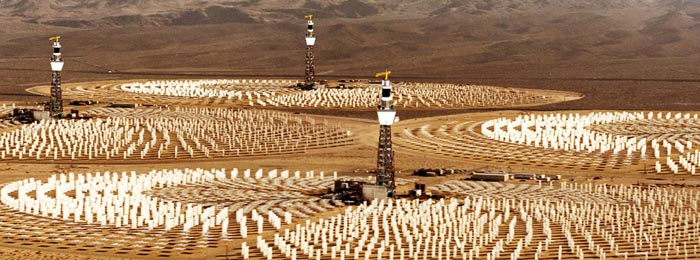
Great piece by Declan Butler in Nature on the new venture capitalism in Silicon Valley. Green energy, folks. California gold. Butler reports how the venture-capital industry in the US spent $2.6 billion on clean-energy technologies in the first three-quarters of this year. Up from $1.8 billion in 2006, and $533 million in 2005. Google joined the game last week, committing millions more to solar, wind and geothermal, seeking a technology patch to make renewables cheaper than coal. A few weeks earlier, Al Gore’s London-based Generation Investment Management partnered with Kleiner Perkins Caufield & Byers in Menlo Park—the green-energy investors that nurtured Amazon, Google and Genentech—to fund global climate solutions.
For the fast-moving entrepreneurs of the [Silicon] [V]alley… the next frontier is the roughly US$6-trillion energy market, where the dinosaurs of power-generation utilities have traditionally invested a pittance in research and development. “Venture capital is exactly what we need to try new things outside the bounds of what the traditional energy companies think is worth doing,” says Vinod Khosla, a veteran entrepreneur who co-founded Sun Microsystems and now heads Khosla Ventures in Menlo Park, one of the most prominent clean-energy venture-capital firms. “There is almost no technology risk-taking in any of the energy companies.” Khosla predicts that within five years there will be a green form of electricity that is cheaper than coal, and cleaner fuels that are cheaper than oil.
Butler also notes that although the US lags far behind Europe’s leaders, Denmark and Germany, in renewables, its venture-capital investments in clean tech now more than double those in Europe.
California scooped $726.2 million of this year’s US clean-tech venture funding, followed by Massachusetts ($292.6 million) and Texas ($149.4 million). Almost $1 billion of US investment went abroad, including a $200-million investment in Brazil’s Brazilian Renewable Energy, which produces ethanol, and a $118-million investment in China’s Yingli Green Energy Holding Company, which makes photovoltaic solar systems.
This is the reason I refuse to surrender all hope.
Julia Whitty is Mother Jones’ environmental correspondent. You can read from her new book, The Fragile Edge, and other writings, here.











